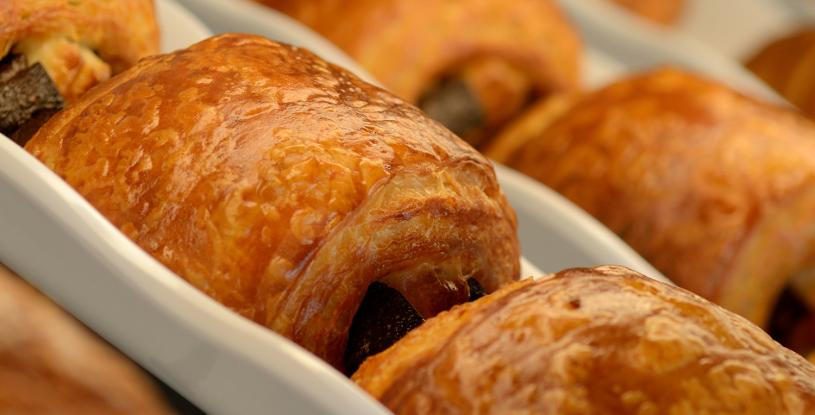MGP food scientists answer your questions about applications issues. Here, Food Technology Manager Sarah Fischer discusses working with sheeted dough.
Question: Help! My sheeted dough continues to spring back. Do you have a solution?
Often, dough springs right back after sheeting. This is typically due to the strong, elastic nature of gluten, specifically the glutenin portion of gluten. While we rely on these elastic properties for the structure and texture of baked products, too much of these elastic proteins can create a problem when sheeting out dough.
This takes me back to spring of 2016. I was making pizza topped with plant-based “chicken” using textured protein. I sheeted out my pizza dough, docked, and was about to add sauce and toppings, and suddenly, “boing,” the dough sprung back. “No,” I thought. Nothing is quite as frustrating!
I realized I should have added a protein with more gliadin-like properties, one that would provide extensibility to counteract the elasticity. I went to my cabinet and found Arise® 5000 and mixed up another pizza dough. I noted reduced mix time, improved machinability, no more uneven sheeting, no more breakage, no buckiness, and a decrease in proof time. What a time saver! I sheeted out the dough with Arise 5000 and was pleased with its ease of handling.
Alright Arise 5000, you’ve surprised me thus far, and now here’s the final test, fingers crossed, will it spring back just as I’m about to sauce and top? It doesn’t! Those gliadin-like properties saved the day! Since then, no matter if I’m at work or at home, I add Arise 5000 to every sheeted dough recipe. I refuse to relive that spring day when I first encountered this annoying problem.

